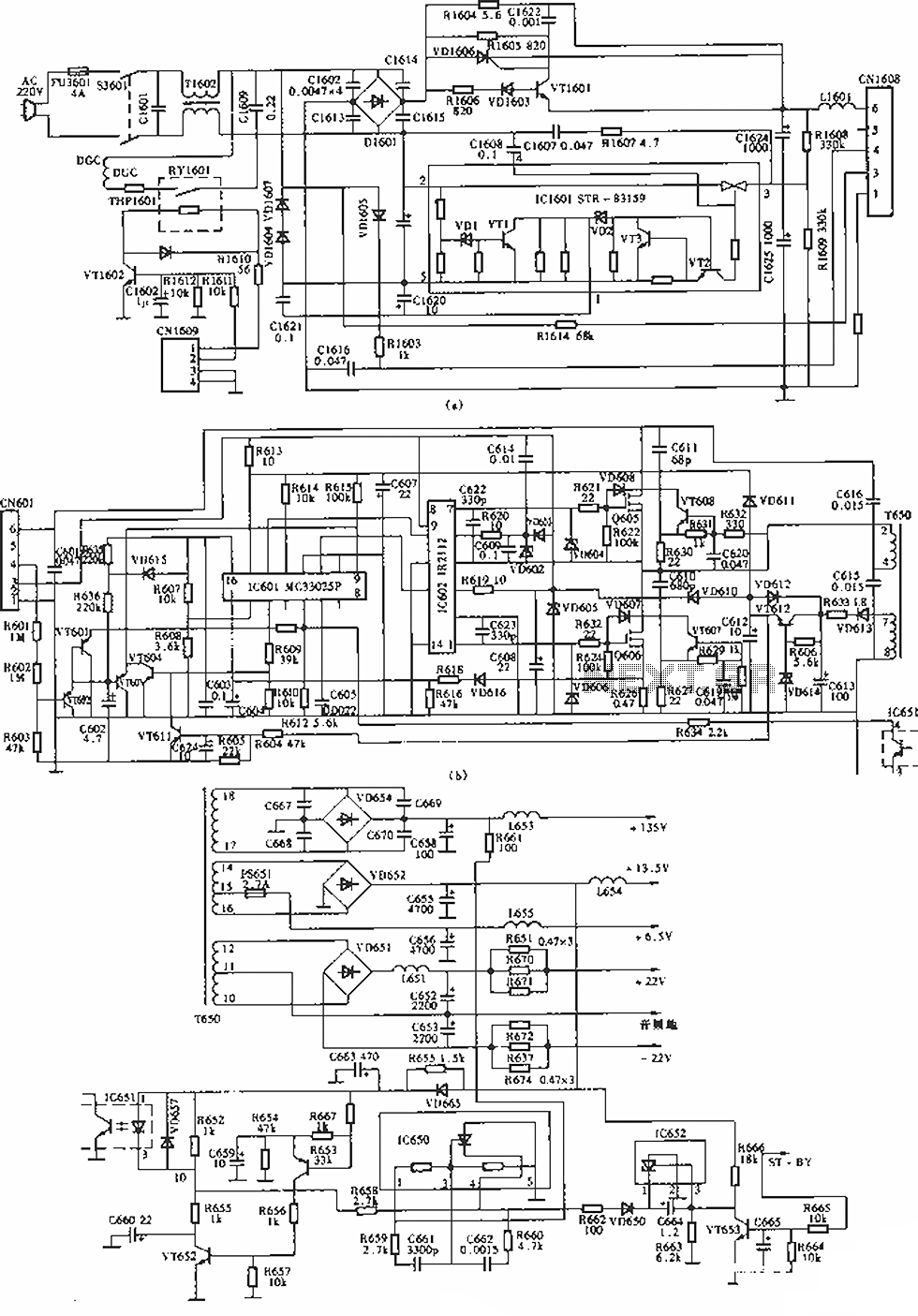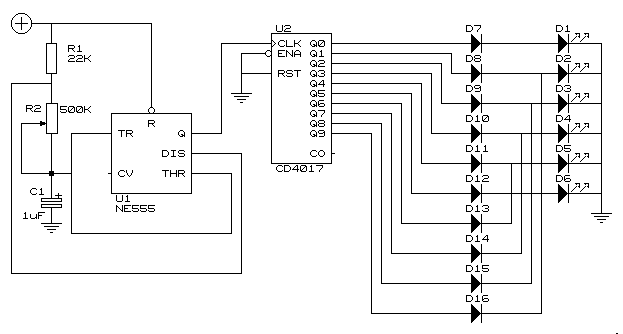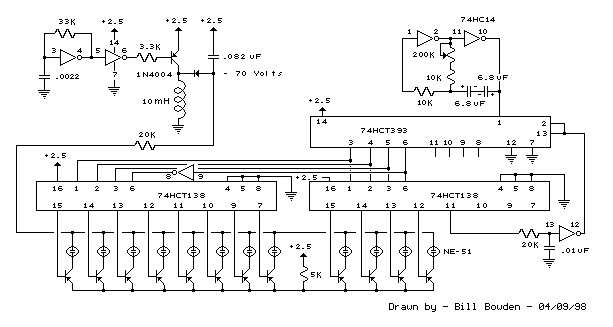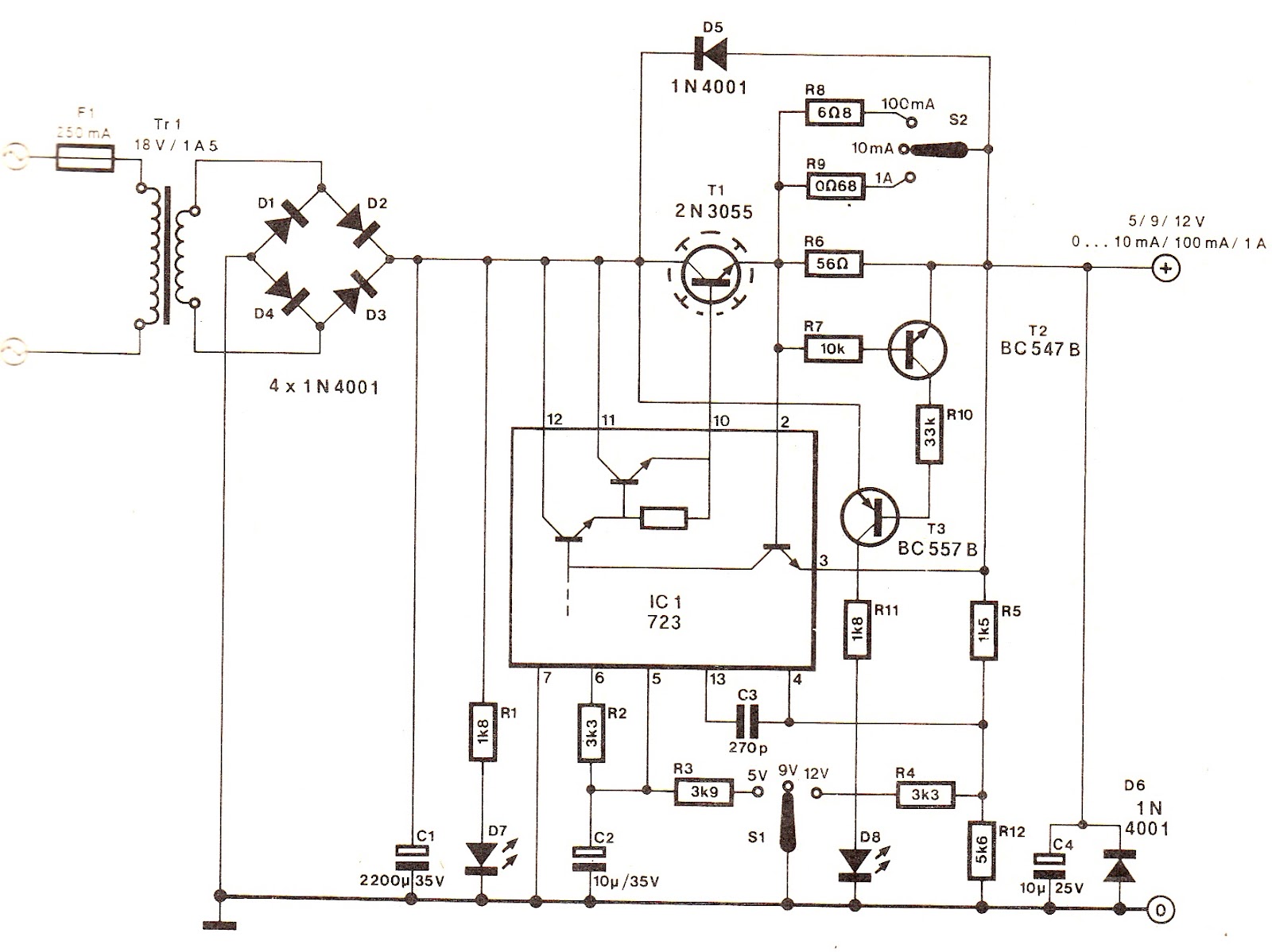
555 Timer Astable Mode Circuit
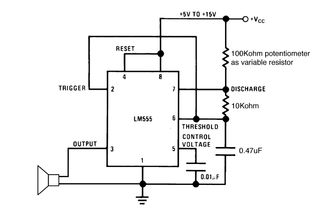
Setting the 555 timer in astable mode results in a continuous series of output pulses.
The 555 timer IC, when configured in astable mode, operates as an oscillator, generating a square wave output. This configuration does not require any external triggering, as it continuously cycles through its high and low states. The frequency and duty cycle of the output signal can be adjusted by changing the values of the resistors and capacitor connected to the timer.
In a typical astable configuration, two resistors (R1 and R2) and a capacitor (C1) are connected in a specific manner. The discharge pin (Pin 7) is connected to the junction of R1 and R2, while the threshold (Pin 6) and trigger (Pin 2) pins are connected to the junction of R2 and C1. When the circuit is powered, the capacitor charges through R1 and R2, and when it reaches approximately 2/3 of the supply voltage, the output at Pin 3 switches from high to low. The capacitor then discharges through R2 until it reaches 1/3 of the supply voltage, at which point the output switches back to high. This cycle repeats indefinitely, producing a square wave output.
The frequency of the output signal (f) can be calculated using the formula:
f = 1.44 / ((R1 + 2 * R2) * C1)
The duty cycle, which defines the proportion of time the output is high versus low, can be determined using:
Duty Cycle (%) = (R2 / (R1 + 2 * R2)) * 100
By selecting appropriate values for R1, R2, and C1, the frequency and duty cycle can be tailored to meet specific application requirements. This versatility makes the 555 timer in astable mode suitable for a variety of applications, including LED flashers, tone generators, and pulse-width modulation (PWM) circuits.As I described in the last step, setting the 555 timer up in astable mode causes it to output a continuous series of pulses. In this circuit, I`ll se.. 🔗 External reference
The 555 timer IC, when configured in astable mode, operates as an oscillator, generating a square wave output. This configuration does not require any external triggering, as it continuously cycles through its high and low states. The frequency and duty cycle of the output signal can be adjusted by changing the values of the resistors and capacitor connected to the timer.
In a typical astable configuration, two resistors (R1 and R2) and a capacitor (C1) are connected in a specific manner. The discharge pin (Pin 7) is connected to the junction of R1 and R2, while the threshold (Pin 6) and trigger (Pin 2) pins are connected to the junction of R2 and C1. When the circuit is powered, the capacitor charges through R1 and R2, and when it reaches approximately 2/3 of the supply voltage, the output at Pin 3 switches from high to low. The capacitor then discharges through R2 until it reaches 1/3 of the supply voltage, at which point the output switches back to high. This cycle repeats indefinitely, producing a square wave output.
The frequency of the output signal (f) can be calculated using the formula:
f = 1.44 / ((R1 + 2 * R2) * C1)
The duty cycle, which defines the proportion of time the output is high versus low, can be determined using:
Duty Cycle (%) = (R2 / (R1 + 2 * R2)) * 100
By selecting appropriate values for R1, R2, and C1, the frequency and duty cycle can be tailored to meet specific application requirements. This versatility makes the 555 timer in astable mode suitable for a variety of applications, including LED flashers, tone generators, and pulse-width modulation (PWM) circuits.As I described in the last step, setting the 555 timer up in astable mode causes it to output a continuous series of pulses. In this circuit, I`ll se.. 🔗 External reference
